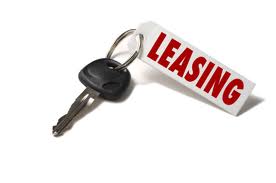 For many people, the best way to buy a new car is actually to lease one. By leasing your car, you get all the benefits of owning a new car for less money down and lower payments, with the added benefit (in many cases) of free regular maintenance from the dealer (oil changes and the like) as well as the option to either pay off the balance of your car’s original price OR exchange your existing car for another new one at the end of your lease.
For many people, the best way to buy a new car is actually to lease one. By leasing your car, you get all the benefits of owning a new car for less money down and lower payments, with the added benefit (in many cases) of free regular maintenance from the dealer (oil changes and the like) as well as the option to either pay off the balance of your car’s original price OR exchange your existing car for another new one at the end of your lease.
On the other hand, you also have to insure a leased car, just as you would a car that you’ve purchased through financing, and that means full coverage. What does full coverage entail? Here are the basic elements:
- Liability Coverage: The minimum amount you have to have is usually dictated by the state where you live, but you can increase that – and you should do so if you own a home or business. This coverage pays out if you’re at fault in an accident where someone is injured or their car is damaged, and often includes un- or underinsured motorist coverage as well.
- Collision Coverage: This pays out if you collide with something or someone and you are injured or your car is damaged, whether it’s your fault or not. If the other party causes the accident, however, their insurance should pay first. Collision coverage is often kept even after a loan or lease is paid off but a car still has enough value that replacing it would be difficult.
- Comprehensive Coverage: This is optional for cars that are completely owned, without any loan or lease, and required for cars with any sort of financing agreement. This is the “everything else” coverage that includes damage to your car from vandalism or weather.
If that sounds like a lot of insurance coverage for a car you’re only leasing, go read your lease agreement again. Why? Because you might have to purchase Gap Insurance as well.
What is Gap Insurance?
Gap insurance is essential for leased cars, especially if you got in on a no down payment deal. It covers the “depreciated market value” of your car at the time of a collision. All cars begin to depreciate the second you drive them off the dealer’s lot, and new cars depreciate the most in the first few years of ownership. Since lease payments are typically lower than loan payments, the market value (what your insurance payout will be based upon) is usually going to be lower than the balance of your lease contract.
Gap insurance pays the difference between what regular insurance covers and what is due on your contract.
There are a few things you need to know about gap insurance, however:
- If you don’t carry comprehensive and collision coverage on your leased car, gap insurance won’t pay anything.
- Some lease contracts include gap insurance. Don’t purchase it if it’s already included by the lease company, dealership, or the insurance company providing the rest of your coverage.
- Gap insurance does not cover the deductible (the part you pay out of pocket when you file a claim) on your regular car insurance.
- Some gap insurance policies cover your lease down payment; some do not. Ask about this.
- Gap insurance is only applicable as long as you have met all the terms of your lease contract.
- In most cases, even if your car was totaled, you have to keep making your lease payments until the gap insurance payout is received.
- Gap insurance is NOT “wear and tear” insurance, which is generally purchased from your lease company. THAT coverage merely covers normal wear and tear to the car.
- If you don’t already have gap insurance, and you need it, don’t worry. You can buy it after your lease has begun.
As you can see, even though insurance for a leased car isn’t that different from insurance for a financed car, the potential need for gap insurance changes the picture entirely.
When you’re shopping for a car to lease, always be sure to factor the price of insurance into your monthly budget.





